Tips for Wedding Dress Fitting: Ensuring a Perfect Fit
Choosing your wedding dress is one of the most exciting parts of planning your big day. The fitting process is just as crucial to ensure that you look and feel perfect when you walk down the aisle. Getting the right fit will make you feel comfortable and confident on your special day.
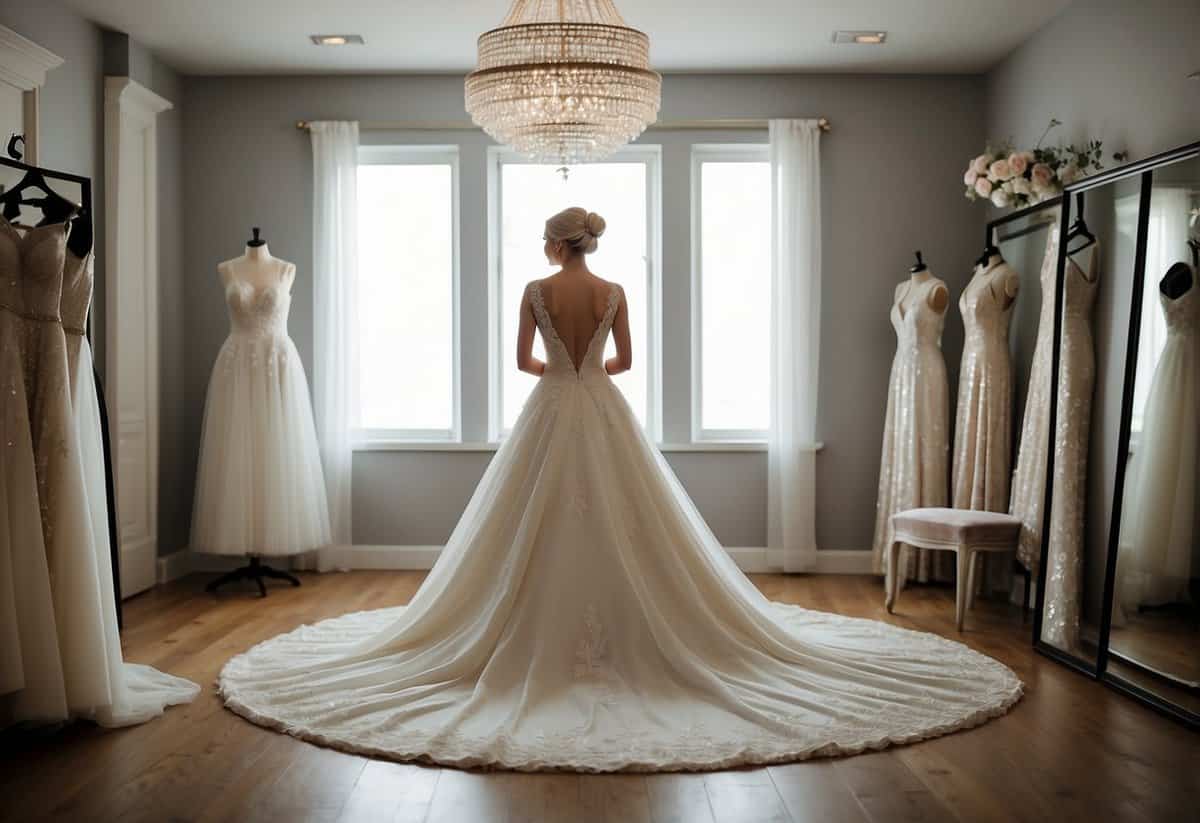
During dress fittings, many factors come into play, from the type of shoes you’ll wear to the undergarments you choose. Your fittings are a time to make your dress truly yours, shaped and tailored to fit perfectly. With a few practical tips, you can help make your fitting process smoother and more enjoyable.
1) Bring the Right Undergarments

Bringing the right undergarments to your wedding dress fitting is crucial. The shape and fit of your dress depend on what you wear underneath. For example, a strapless dress needs a strapless bra to give the right support.
Consider shapewear if you want a smoother silhouette. High-waisted shorts or slips can help streamline your figure, making the dress fit more comfortably.
Always bring the exact undergarments you plan to wear on your wedding day to every fitting. This way, your tailor can make precise adjustments, ensuring a perfect fit for your big day.
2) Schedule Fittings in Advance
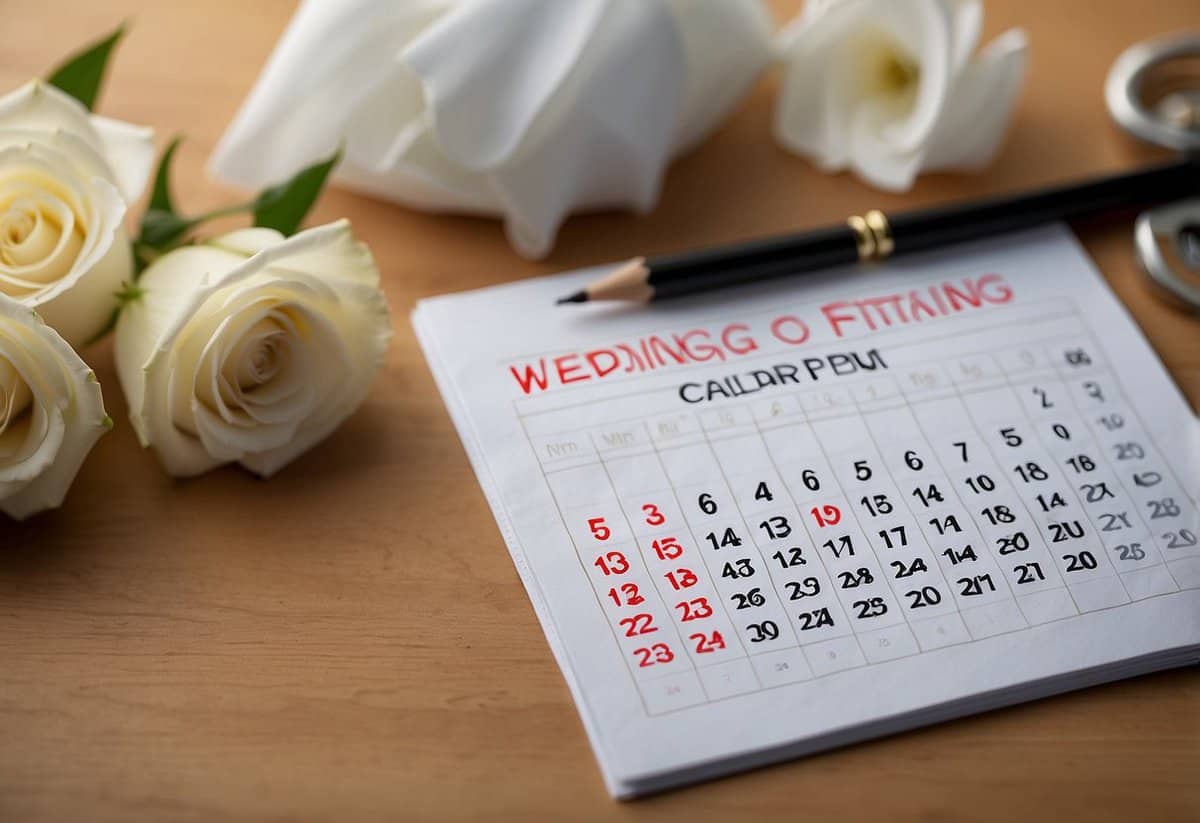
It’s crucial to schedule your dress fittings well ahead of time. This ensures that you have enough time to make all necessary adjustments. Most bridal salons recommend having at least three fittings.
Your first fitting should be around three months before the wedding. This gives your seamstress enough time to assess what changes need to be made. It’s important to bring the shoes and undergarments that you plan to wear on the big day.
The second fitting is usually about a month before the wedding. This is when fine-tuning happens, ensuring that the dress is starting to fit you perfectly.
The final fitting should be about two weeks before your wedding. This fitting is the last chance to make sure everything is perfect. By spacing out your fittings like this, you can ensure a perfect fit on your special day.
3) Wear the shoes you plan to wear on your wedding day
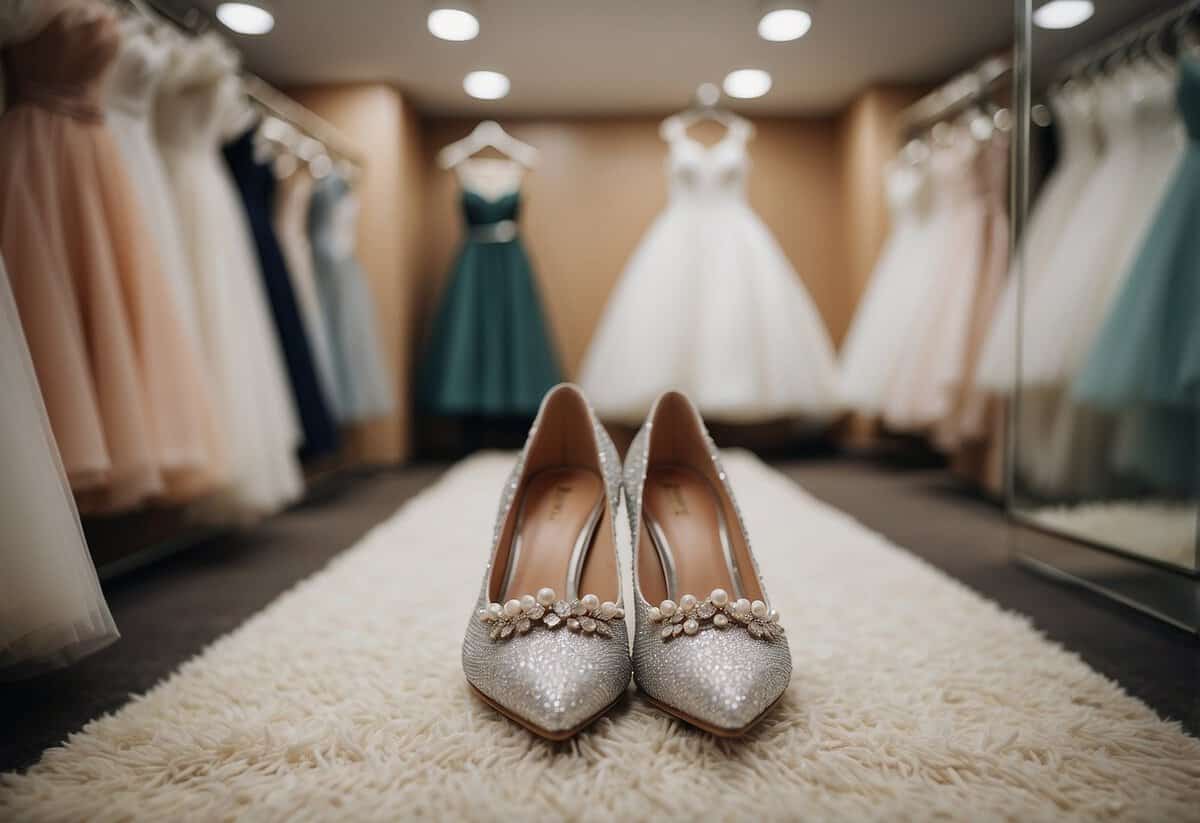
When you head to your first wedding dress fitting, bring the shoes you plan to wear on your big day. The height of your heels or the shape of your flats can affect the length and fit of your dress.
Wearing the actual shoes ensures your gown is tailored to the correct length. This is important so that you don’t trip or have an awkward fit.
Also, you can see how your overall look comes together. You’ll feel more confident and prepared for your special day.
4) Communicate clearly with your tailor
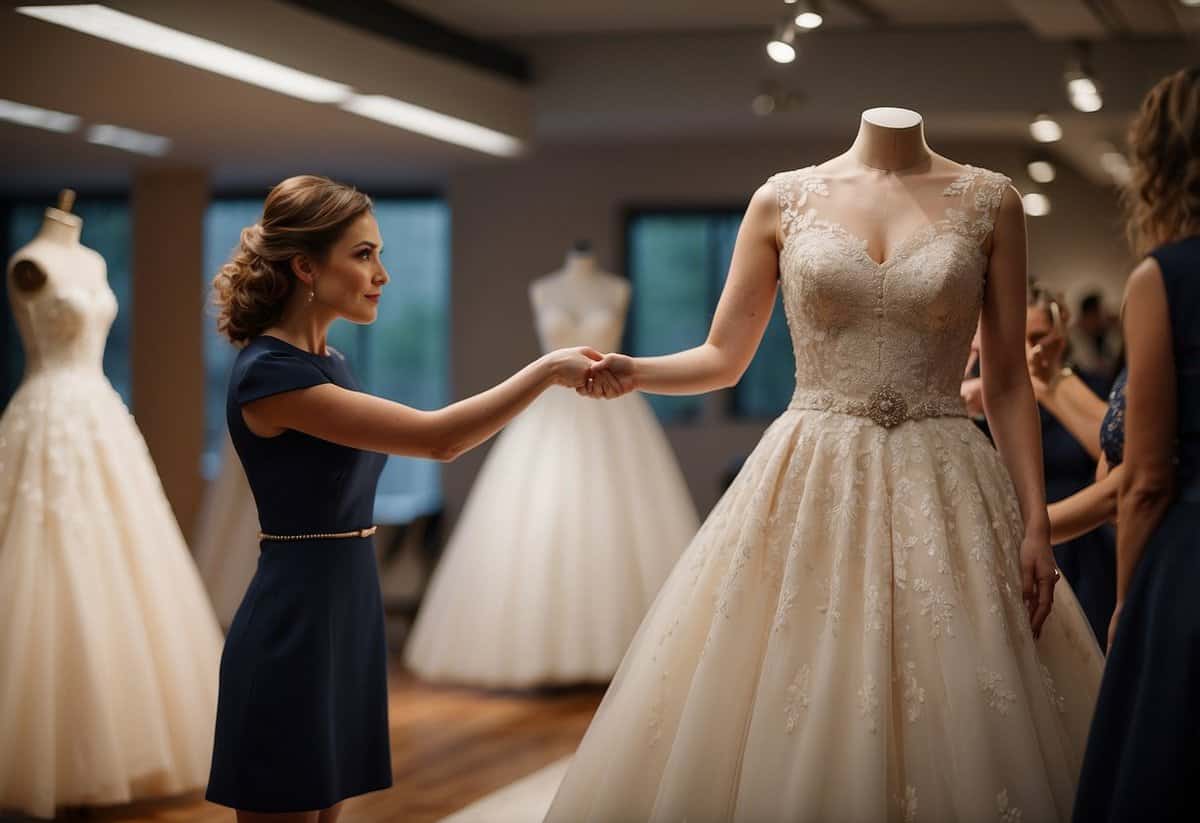
Clear communication with your tailor is key.
Start by sharing your vision for the dress. Describe what you love about it and show pictures if you can. It helps them understand your style and expectations.
Ask questions about the tailoring process. Knowing what changes will be done and how long it will take can ease your mind.
Express any concerns promptly. Whether it’s about the fit, design, or feel of the dress, let your tailor know. They can make adjustments to ensure you’re happy with the final result.
Discuss any planned accessories like veils or shoes. These can affect the final look and fit of your dress. Bringing them to your fitting is a good idea.
By maintaining open dialogue, you ensure that your dress fits perfectly and meets your expectations.
5) Sit Down and Move Around During Fittings to Test Comfort
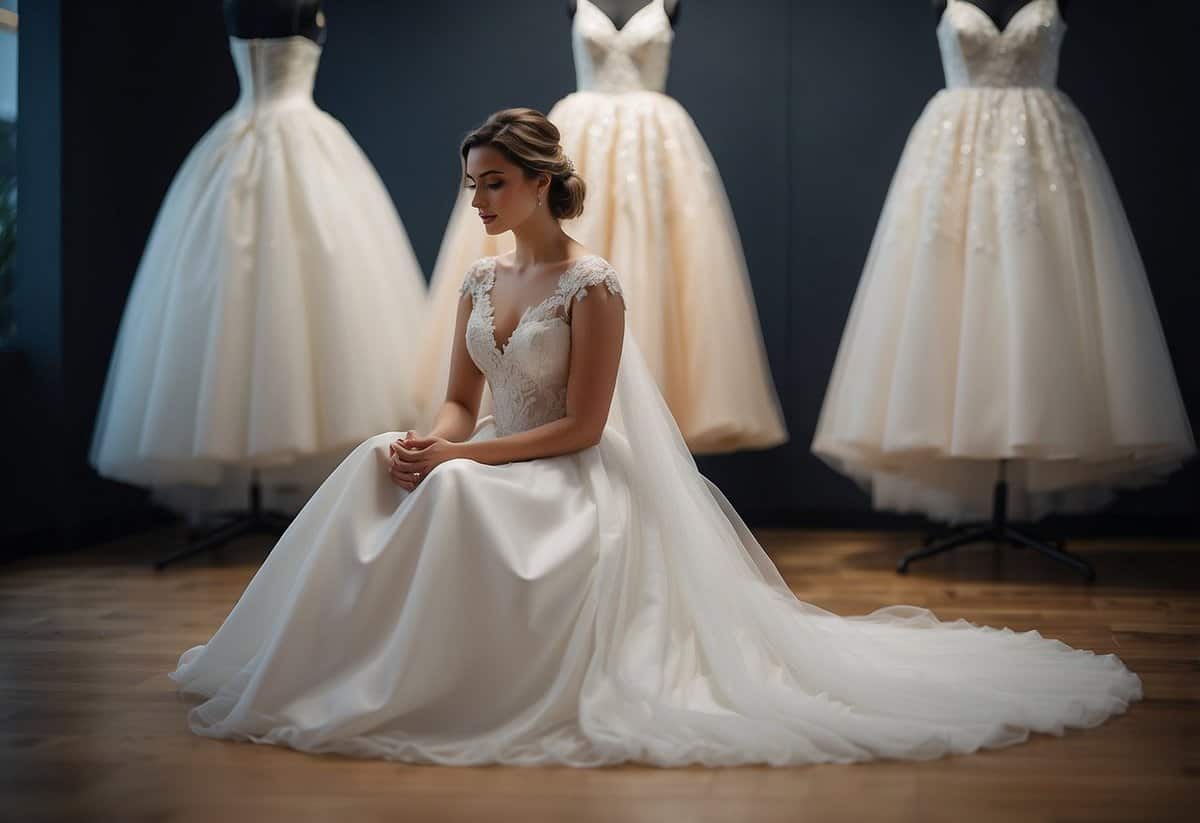
When you’re at your wedding dress fitting, make sure to sit down and move around. It’s important to see how the dress feels when you’re sitting, bending, and walking.
Don’t forget to try basic movements like lifting your arms and bending over. This helps ensure you can dance and enjoy your big day without discomfort.
Being comfortable on your wedding day is critical. Testing your dress like this helps you spot any tight spots or areas that need adjustments.
6) Take photos from various angles
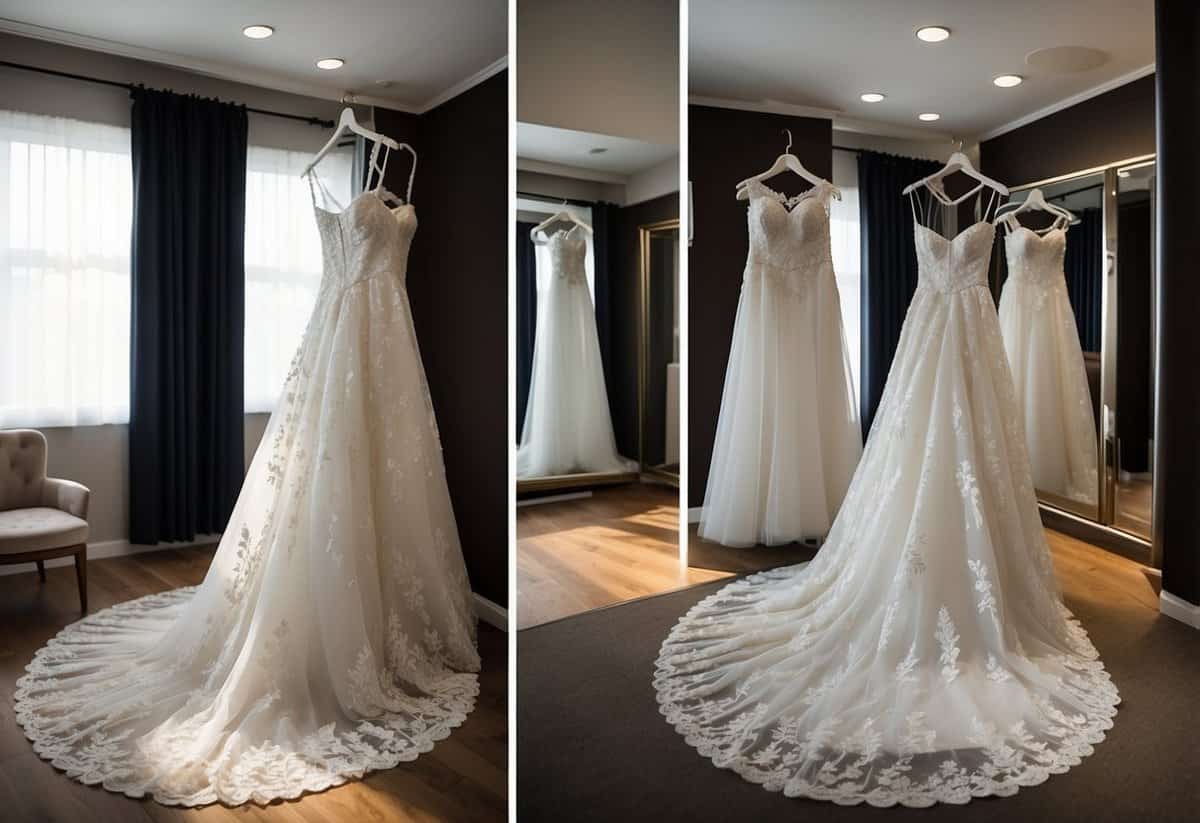
Make sure to capture photos of your wedding dress from different angles during your fitting. This helps you see how the dress looks from every side.
Ask a friend or family member to take pictures while you move around. This way, you can see how the dress fits and flows while you walk and turn.
Looking at these photos later can help you notice any areas that might need adjustments. This ensures your dress looks perfect on your big day.
7) Bring a Trusted Friend
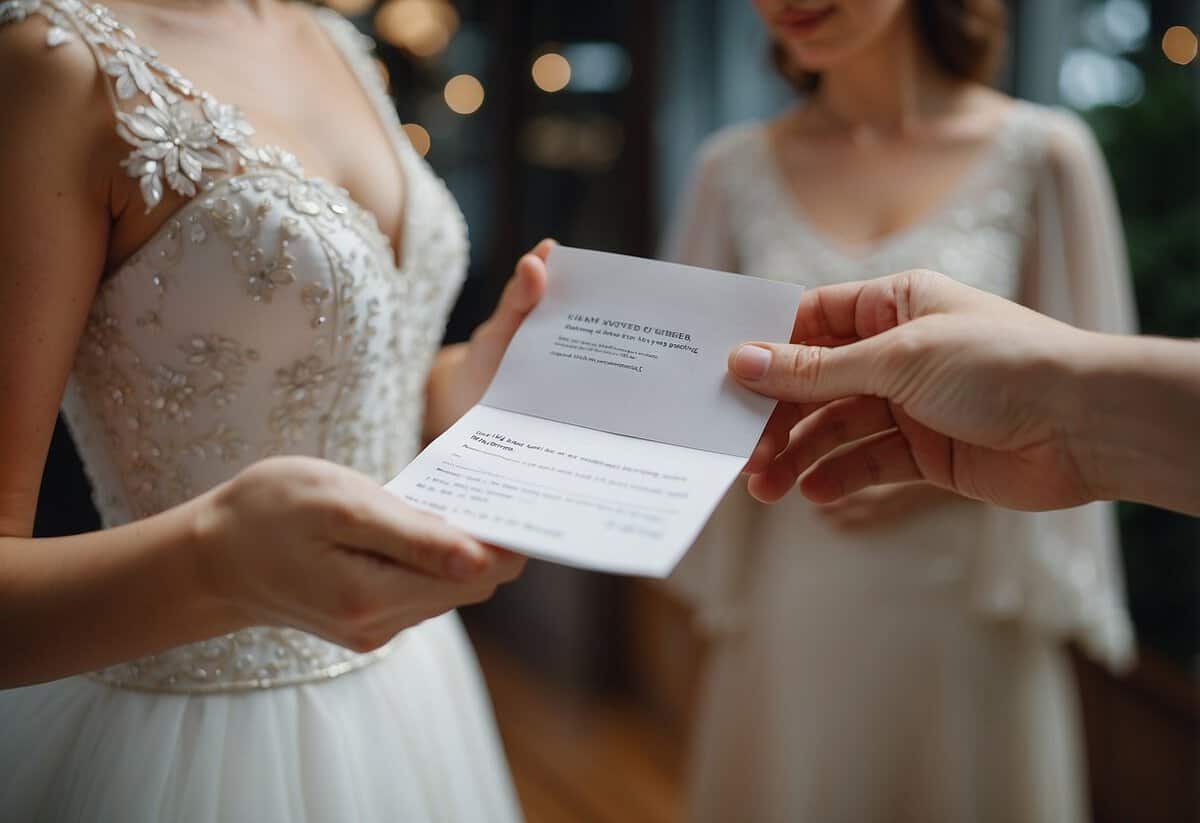
Having a trusted friend with you during your wedding dress fitting can make a big difference. They can offer honest opinions and support, making the experience more enjoyable.
Choose someone who knows your style and preferences well. Whether it’s your mother, your maid of honor, or your best friend, their input can be invaluable.
Your friend can also help with practical matters. They can take photos, so you can see how the dress looks from different angles. Plus, their presence can make you feel more comfortable and confident.
8) Focus on the fit, not the size
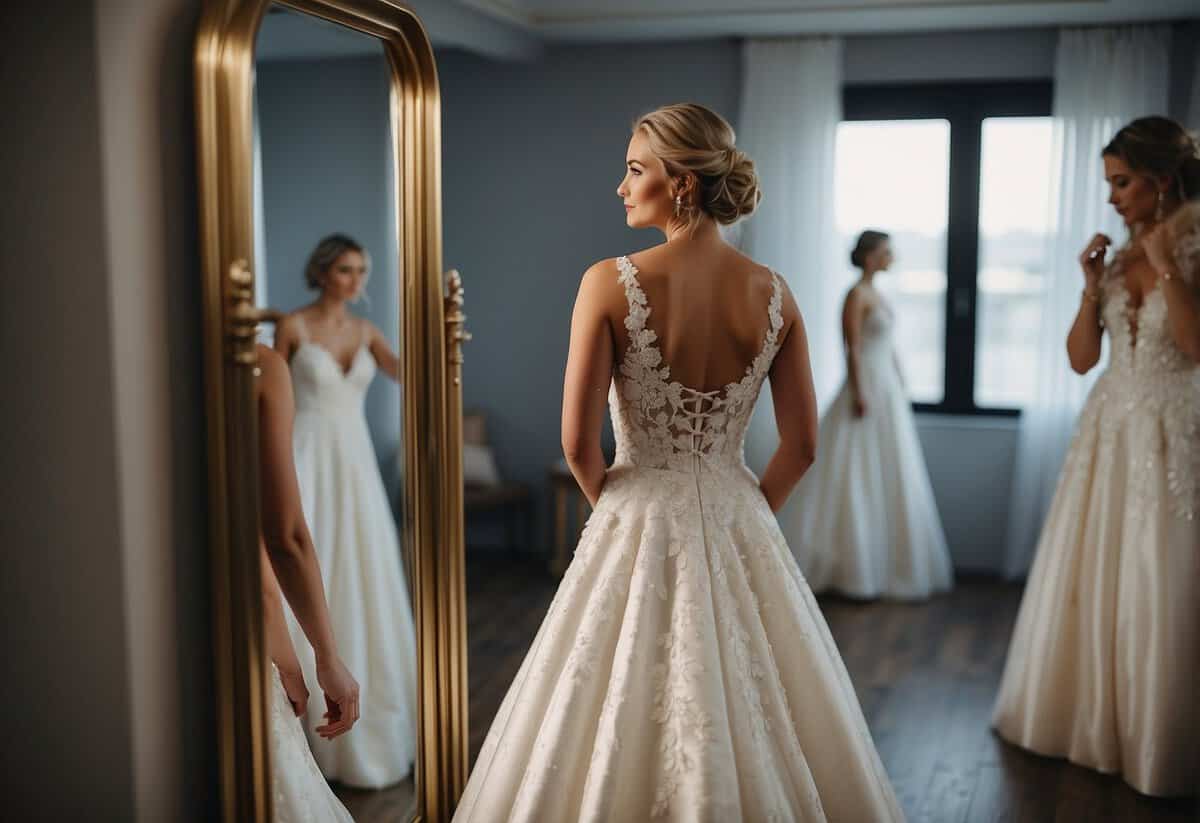
When it comes to your wedding dress, the fit is what really matters, not the number on the tag.
Bring the shoes and undergarments you’ll wear on your big day to ensure the best fit. Slight changes in what you’re wearing underneath can affect how the dress sits on your body.
Your seamstress will take in seams and adjust hems to make sure the dress fits you perfectly. Communicate openly about any concerns, and don’t hesitate to speak up if something feels off.
Remember, wedding dress sizes often differ from regular clothing sizes. So, trust the process, not the label.
9) Keep an Open Mind About Alterations
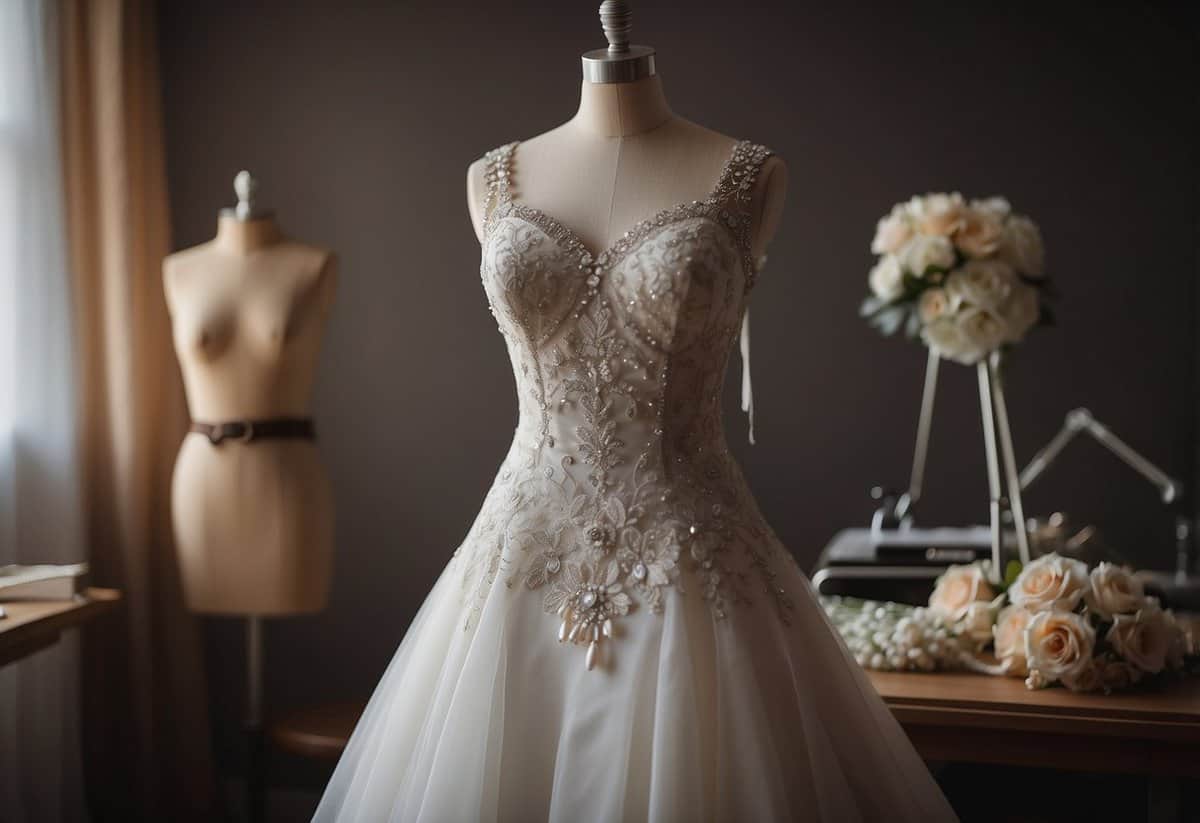
When going for wedding dress fittings, be open to changes. Alterations can make the dress fit your body perfectly. You may find that some adjustments are needed to enhance the overall look.
Talk to your tailor about what can be altered. Sometimes, small changes can make a big difference. Don’t be afraid to suggest alterations that might flatter your figure more.
Remember, the goal is to feel comfortable and look your best. Even if the dress isn’t perfect at first, alterations can transform it into your dream gown.
10) Consider bringing accessories
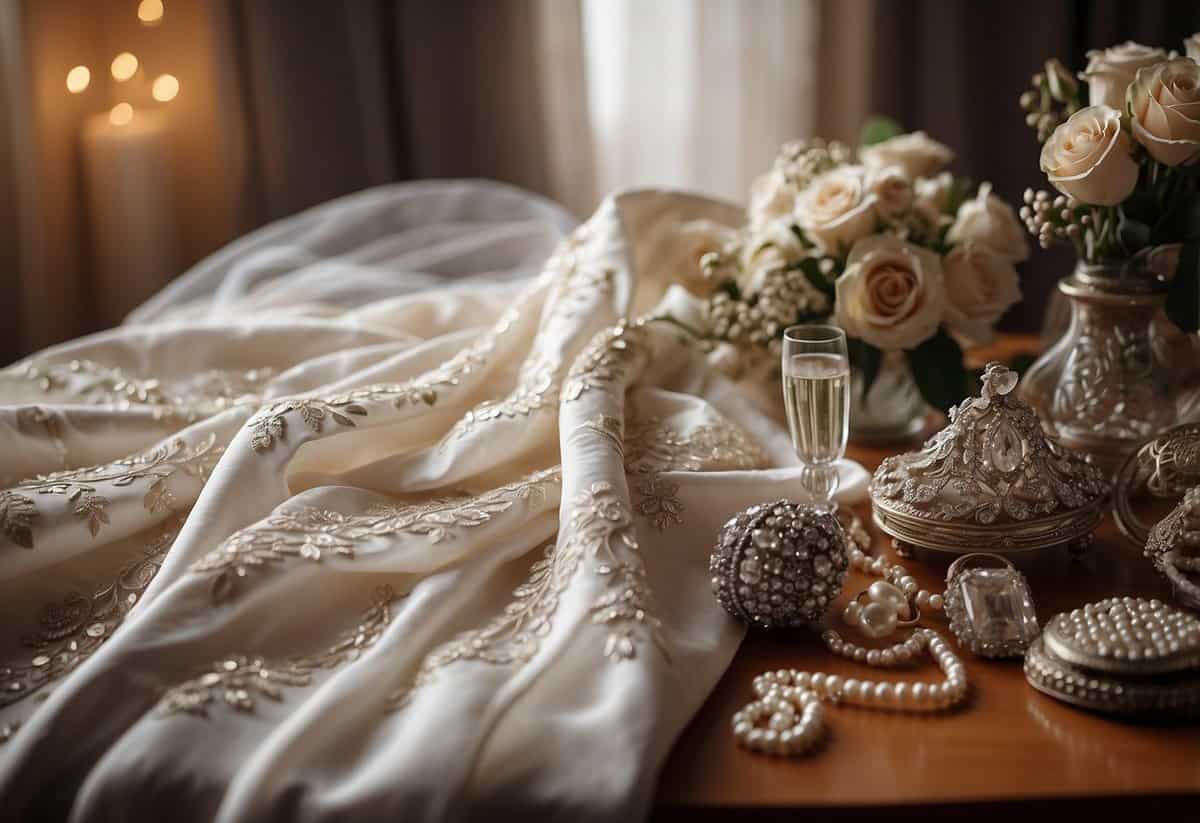
When you go to your wedding dress fitting, it’s a great idea to bring your accessories. This includes jewelry, shoes, and even your bridal veil. These pieces will help you see the complete look.
Make sure to bring any special items, like family heirlooms. This will ensure they match perfectly with your dress. It’s helpful to try everything together.
Also, don’t forget your wedding shoes. Your dress’s length will be adjusted based on your shoes, so it’s essential to have them. Accessories can make a big difference in how your dress fits and looks.
Preparing for Your Wedding Dress Fitting
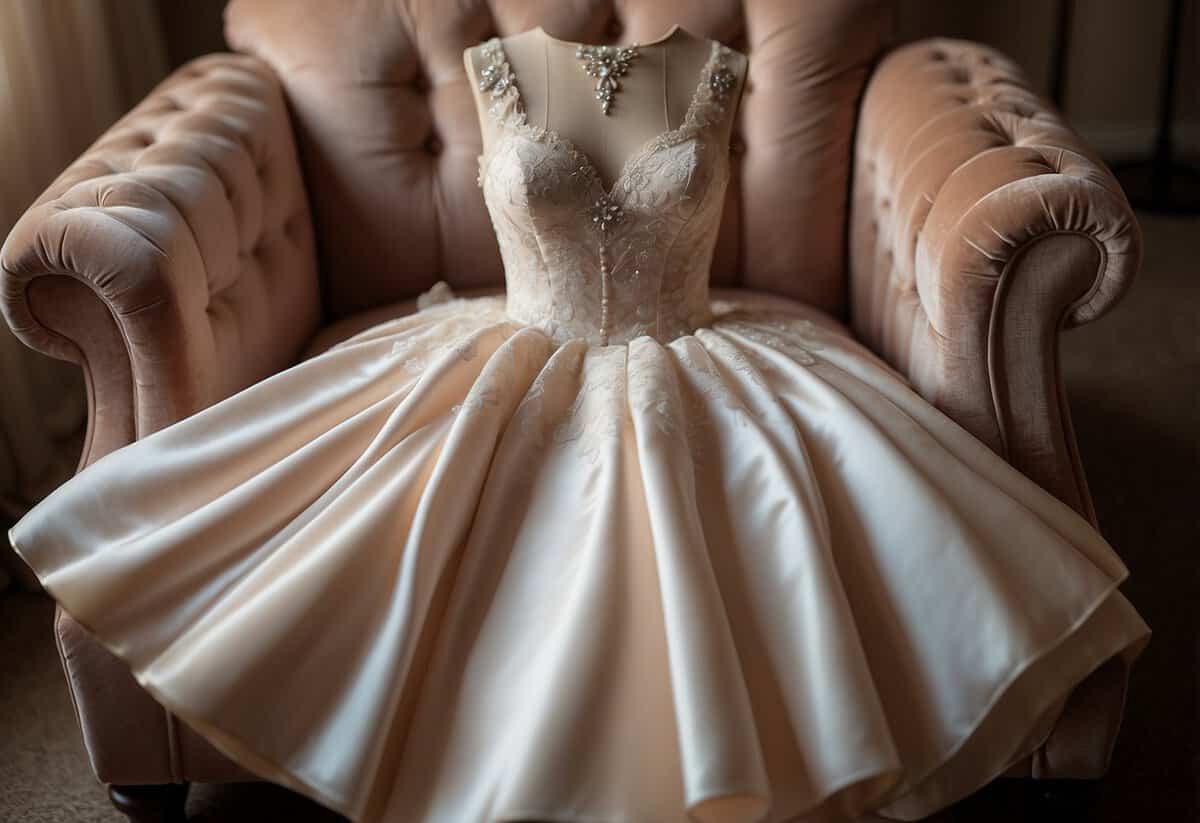
To make sure your wedding dress fitting goes smoothly, you need to choose the right undergarments, bring the proper accessories, and schedule your fitting at the right time. Each of these steps is essential for achieving the perfect look on your special day.
Choosing the Right Undergarments
Wearing the right undergarments is crucial. The fit of your wedding dress can depend heavily on what you wear beneath it. Bras and shapewear need to match the style of the dress. For example, if your dress has a low back or is strapless, make sure to have the appropriate bra.
Changing undergarments later can cause fitting issues. Bring the exact bra and underwear you plan to wear on your wedding day to every fitting. It ensures the seamstress can make precise adjustments. Many brides overlook this, but it’s key to a well-fitted dress.
Simple steps like this ensure your dress fits your body perfectly. Also, comfort is important—choose undergarments that feel good for a long day wearing your wedding dress.
Bringing the Right Accessories
When you go to your fitting, take along the accessories you plan to wear on your wedding day. This means your veil, jewelry, and especially your shoes. Shoes are vital because they affect the dress’s length and the way it hangs.
Even if you haven’t chosen all your accessories yet, bringing similar items can be helpful. Earrings, necklaces, and even any hairpieces you will use will help create a full picture of your wedding day look.
Small accessories can change how a dress looks and feels. Including them in your fitting provides a complete picture of how everything comes together. Plus, it helps the seamstress adjust the dress to make sure everything fits well together.
Scheduling Your Fitting at the Right Time
Timing your wedding dress fitting is crucial. Schedule your first fitting at least 8-10 weeks before your wedding day. This allows enough time for any necessary alterations. Most brides need two or three fittings, so plan accordingly.
Make sure to avoid periods of significant weight change to ensure a consistent fit. Always consider your own schedule and any holidays that might affect your appointments.
Being timely ensures that the seamstress has enough time to make changes, and you won’t feel rushed. Proper planning helps make your fittings stress-free and ensures your dress is perfect for your big day.
Understanding the Alteration Process
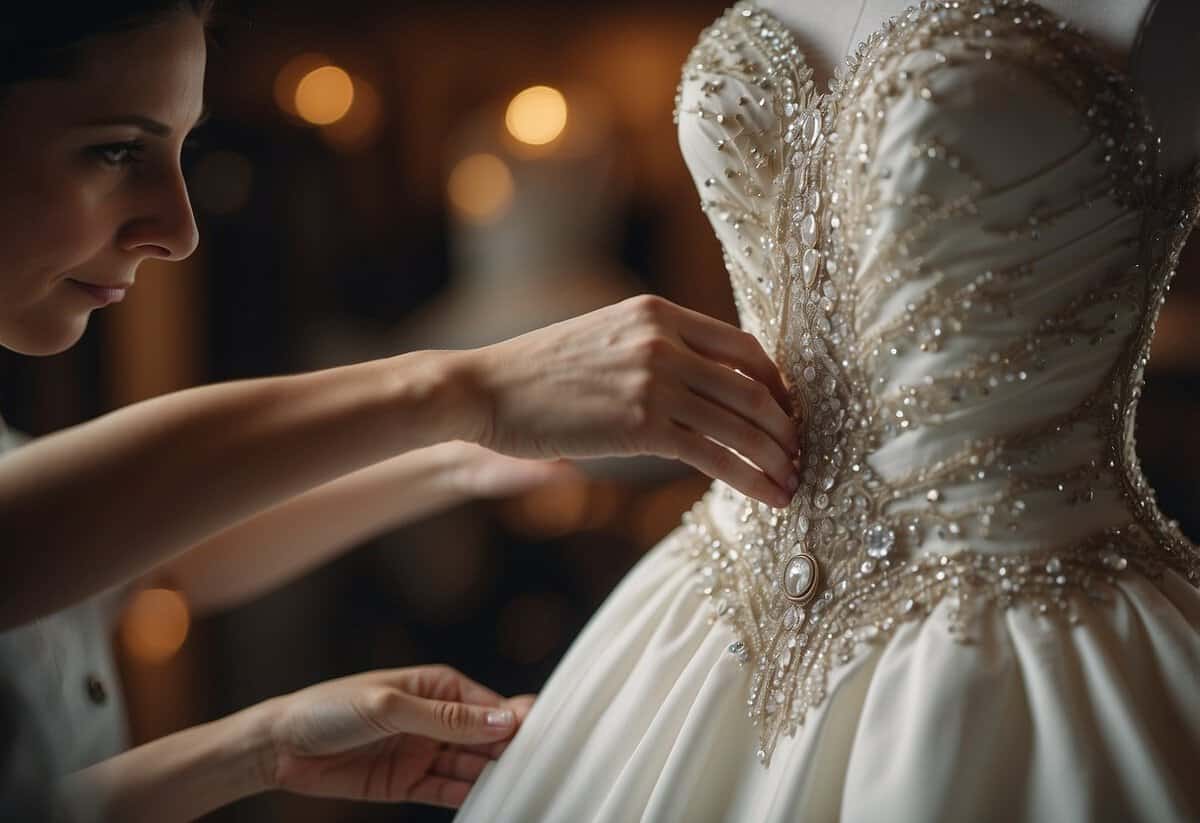
When you’re preparing for your wedding day, ensuring your dress fits perfectly is important. This section helps you understand the various aspects of the alteration process, including common types, timelines, and costs.
Types of Common Alterations
Your wedding dress might need several types of adjustments to fit you right. Hemming is often needed to adjust the length of the dress, especially if you’ve decided on specific shoes. Taking in or letting out the seams can adjust the fit around your bust, waist, and hips.
Adding bustles can lift and secure the train of your dress, making it easier to move around during the reception. Adjusting straps or sleeves ensures they are snug without being too tight. Additional detailing such as adding beads or lace may also be part of the alterations, especially if you want extra embellishments.
Timeline for Alterations
Begin your alterations early to avoid stress. Ideally, you should start the process about 2-3 months before your wedding date.
Typically, you might need three fittings:
- First fitting: The seamstress will assess the dress on your body.
- Second fitting: Adjustments are made, and you can see the changes.
- Final fitting: Small tweaks ensure the perfect fit.
*Scheduling your fittings well in advance gives you time to make any additional adjustments if necessary. Bringing your wedding shoes and undergarments to each fitting can help ensure accuracy.
Costs Associated with Alterations
The cost of wedding dress alterations can vary widely, often ranging from $150 to $800. Simple adjustments like hemming or taking in the sides might be on the lower end of the cost spectrum.
More complex alterations, like adding embellishments or adjusting the dress length, can be pricier. Detailed designs, such as those involving intricate beading and lace, will usually add to the cost as they require more time and effort.
Discuss the costs upfront with your seamstress to avoid surprises later on. Always factor these expenses into your dress budget early to manage your finances better.








